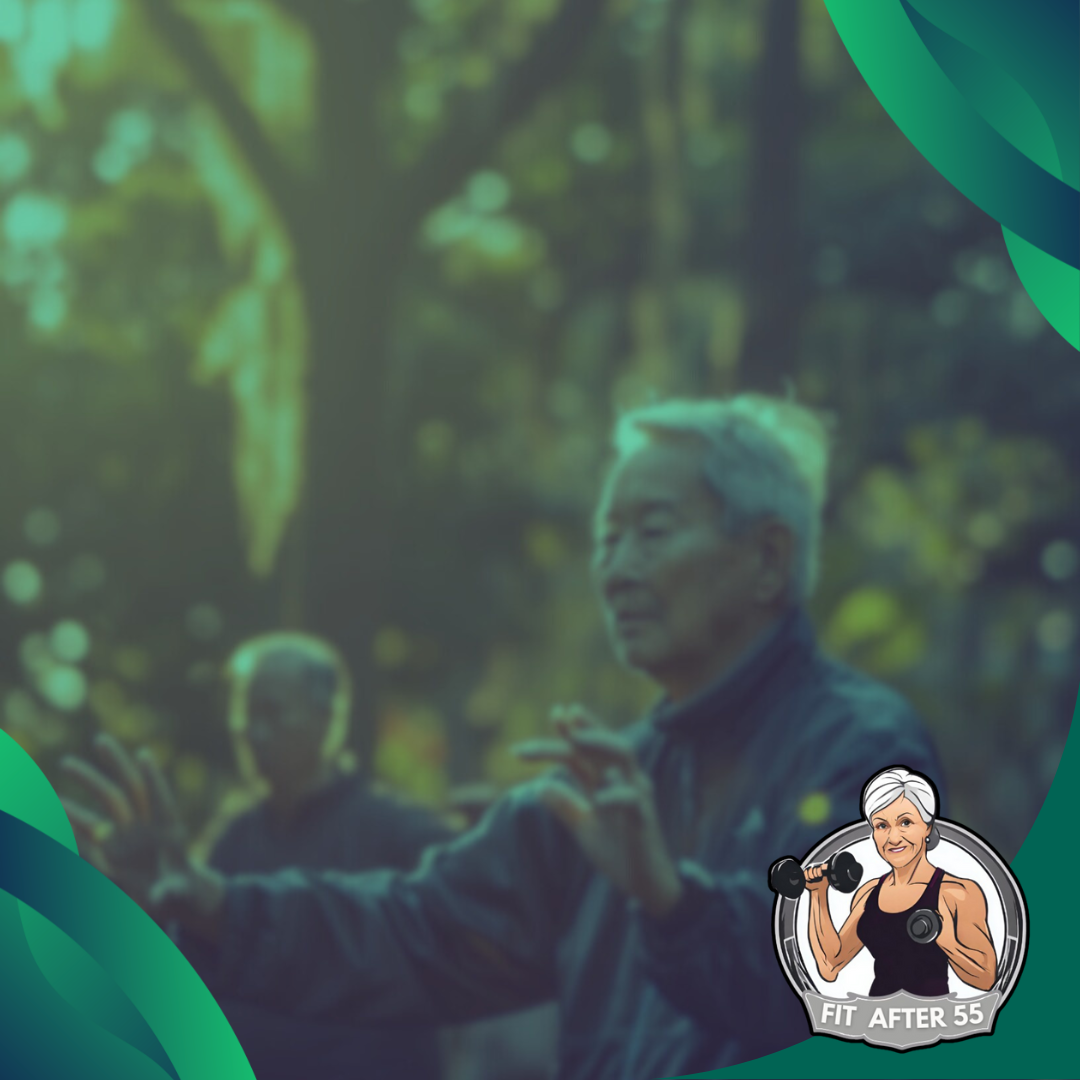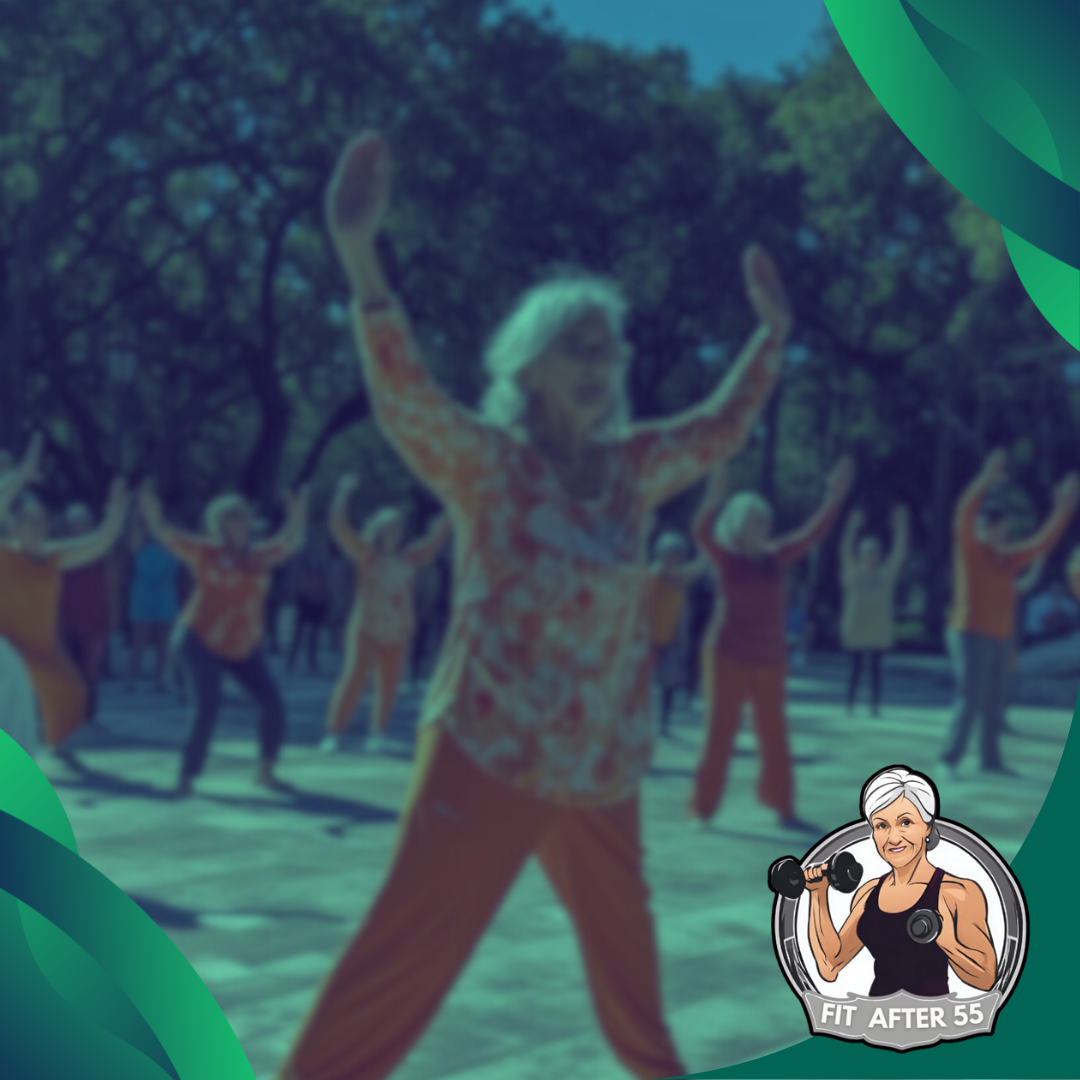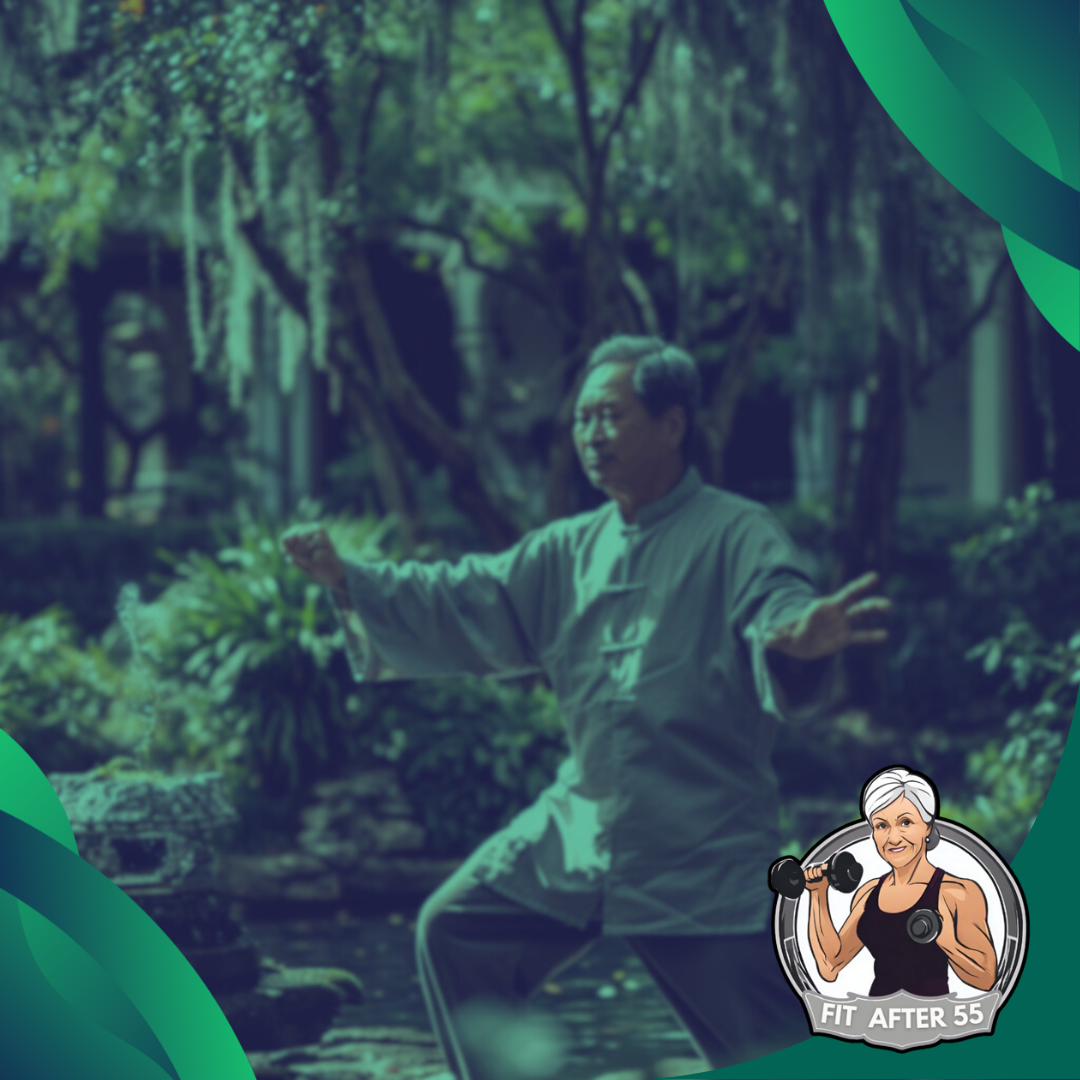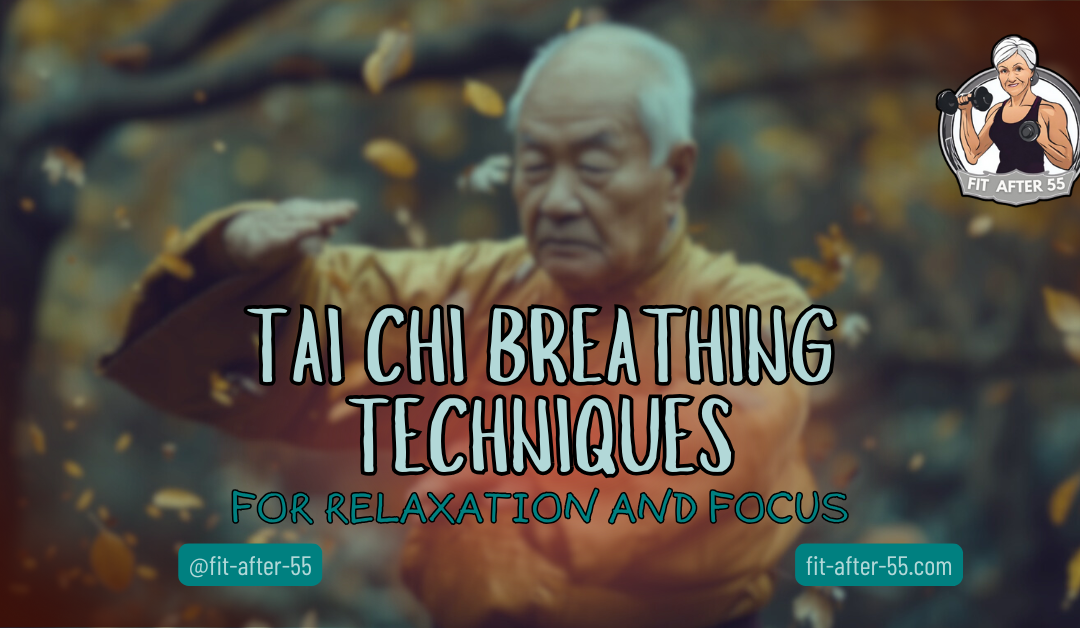Tai Chi breathing techniques have always fascinated me, pulling me into the world of this ancient Chinese practice. As an amateur practitioner, I’ve personally experienced the remarkable benefits it offers for both mind and body. The gentle, flowing movements, synchronized with focused breathing, have helped me find a sense of calm and balance in my often hectic life. It’s a practice that has not only improved my physical health but has also profoundly impacted my mental well-being.
Tai Chi Breathing Techniques for Relaxation and Focus: Simple Ways to Calm Your Mind and Body
Tai Chi breathing is a powerful tool for finding calm and sharpening your mind. When you practice Tai Chi breathing, you tap into an ancient Chinese art that combines gentle movements with focused breathing. This combination helps you relax deeply and improve your concentration.

By learning Tai Chi breathing techniques, you can reduce stress and boost your overall well-being. These methods are easy to learn and can be done almost anywhere.
Whether you’re new to Tai Chi or looking to deepen your practice, mastering these breathing exercises can bring balance to your daily life.
Ready to start your journey? Let’s explore some simple Tai Chi breathing techniques that can help you find peace and clarity in your busy world. With regular practice, you’ll soon feel more centered and focused.

Key Takeaways
- Tai Chi breathing combines gentle movements with focused breathing to promote relaxation and mental clarity
- You can practice Tai Chi breathing exercises anywhere to reduce stress and improve your focus
- Regular practice of Tai Chi breathing techniques can lead to better overall well-being and a more balanced lifestyle
Understanding Tai Chi
Tai Chi blends graceful movements with deep breathing and mental focus. This ancient Chinese practice offers both physical and mental benefits to practitioners of all ages and fitness levels.

Origins and Principles
Tai Chi, also known as Tai Chi Chuan, has roots in Taoist philosophy. It started as a martial art in China hundreds of years ago. The main ideas behind Tai Chi are balance, harmony, and the flow of energy called “qi.”
When you practice Tai Chi, you’ll learn to move slowly and smoothly. You’ll also learn to breathe deeply and stay aware of your body. These principles help you feel more relaxed and centered in your daily life. Tai Chi also teaches you to find balance between opposites, like strength and gentleness.
Different Styles Explored
Tai Chi has several main styles, each with its own unique features:
- Yang Style: The most popular, known for its wide, flowing movements
- Wu Style: Uses compact movements and high stances
- Sun Style: Combines Tai Chi with other martial arts
You can choose a style based on your goals and physical abilities. Some focus more on health benefits, while others keep more martial arts elements. No matter which you pick, all styles share the core Tai Chi principles.
Tai Chi as a Meditative Martial Art
Tai Chi is special because it’s both a martial art and a form of moving meditation. When you practice, you’ll learn self-defense moves while also calming your mind.
The slow, flowing motions help you improve balance and flexibility, build strength gently, reduce stress, and boost focus and mental clarity. By practicing Tai Chi regularly, you can gain better body awareness and a sense of inner peace. It’s a great way to improve both your physical and mental health through one enjoyable activity.
Fundamentals of Tai Chi Breathing
Tai Chi breathing forms the foundation of this ancient practice. It combines natural and diaphragmatic techniques to enhance your focus and relaxation. The concept of Qi plays a key role in understanding the energy flow during breathing.
Natural versus Diaphragmatic Breathing
Your natural breathing is often shallow and centered in your chest. In Tai Chi, you’ll learn to shift to diaphragmatic breathing, also known as belly breathing. This technique involves expanding your abdomen as you inhale and contracting it as you exhale.
To practice, place one hand on your chest and the other on your belly. Take a deep breath and feel your belly rise while your chest stays still. Then, exhale slowly, letting your belly fall.
Diaphragmatic breathing helps you reduce stress, improve oxygen intake, and enhance focus. Try to breathe this way for a few minutes each day. You’ll soon notice it becoming more natural.
Understanding Qi in Breathing
Qi, pronounced “chee,” is the vital energy that flows through your body. In Tai Chi, your breath is seen as a way to cultivate and direct this energy.
When you inhale, imagine drawing in fresh Qi. As you exhale, picture releasing stale energy. This mental focus helps you connect your mind and body, increase your awareness, and boost your energy levels.
Try this: As you breathe, picture a warm light entering your body with each inhale. See it spreading through your body, then leaving as you exhale.
Remember, Qi cultivation takes time. Be patient with yourself as you practice these techniques.
Physical and Mental Benefits of Tai Chi
Tai Chi offers a wide range of advantages for your body and mind. It can boost your physical fitness and mental state in many ways.

Enhancing Physical Health and Balance
Tai Chi can improve your balance and stability. As you practice the slow, flowing movements, you’ll strengthen your legs and core muscles. This can help prevent falls, especially if you’re older.
The gentle exercises in Tai Chi are great for your joints. They can increase flexibility and reduce stiffness. You might find it easier to move around in daily life.
Tai Chi may also boost your cardiovascular health. The controlled breathing and constant motion can strengthen your heart and lungs. This can lead to better endurance and lower blood pressure.
Promoting Mental Clarity and Well-Being
Tai Chi is like a moving meditation. It can help clear your mind and reduce stress. As you focus on your movements and breathing, you may feel more calm and centered.
The practice can also boost your emotional well-being. Many people report feeling happier and more relaxed after doing Tai Chi regularly. It may even help with symptoms of anxiety and depression.
Tai Chi can sharpen your mental focus, too. The concentration required to perform the movements may improve your memory and cognitive function. You might find it easier to stay alert and focused throughout the day.
Integrating Breathing with Movement

Breathing and movement work together in Tai Chi to create a smooth, flowing practice. When you connect your breath with your body’s motions, you can improve your focus and relaxation.
Harmony of Breath and Posture
Your breath and posture are closely linked in Tai Chi. As you move, pay attention to how your breathing affects your body position. Stand tall with your feet shoulder-width apart. Relax your shoulders and let your arms hang naturally.
Breathe deeply into your belly. As you inhale, feel your spine lengthen slightly. When you exhale, let your body settle.
Try this simple exercise:
- Inhale as you slowly raise your arms.
- Exhale as you lower them back down.
- Repeat 5-10 times.
This helps you feel the connection between your breath and movements. With practice, this harmony becomes natural and enhances your Tai Chi experience.
Breathing Patterns in Tai Chi Movements
Different Tai Chi movements have their own breathing patterns. Generally, you’ll inhale when your body expands or rises, and exhale when it contracts or lowers.
For example, in the “Parting the Wild Horse’s Mane” movement:
- Inhale as you step to the side and raise your arms.
- Exhale as you bring your hands down and across your body.
Practicing these patterns helps you coordinate your breath with your movements. This improves your energy flow and makes your practice smoother.
Remember, don’t force your breath. Let it be natural and relaxed. With time, you’ll find a rhythm that feels right for you.
Relaxation and Stress Reduction Techniques

Tai Chi breathing can help you feel calm and focused. It’s a great way to deal with stress and worry in your daily life.
Cultivating a Relaxation Response
When you practice Tai Chi breathing, your body starts to relax. You can lower your heart rate and blood pressure. This helps you feel more at ease.
Try this simple exercise: Breathe in slowly through your nose for 4 counts. Hold for 2 counts. Then breathe out through your mouth for 6 counts. Do this a few times and notice how you feel.
You can do this anywhere, anytime. It’s perfect for when you’re feeling stressed at work or home.
Managing Stress and Reducing Anxiety
Tai Chi breathing is a powerful tool for stress relief. It can help you deal with both everyday worries and bigger challenges.
When you feel anxious, try this: Focus on your breath moving in and out. Picture stress leaving your body with each exhale. This can help clear your mind and calm your nerves.
Regular practice can make a big difference. Even 10 minutes a day can help you handle stress better. You might find it easier to relax and stay calm in tough situations.
Remember, Tai Chi breathing is just one way to manage stress. You can also try other relaxation techniques like yoga or meditation. Find what works best for you!
Deepening Your Tai Chi Practice

Tai Chi offers a path to inner calm and better focus. By adding deep breathing, mindfulness, and regular practice to your routine, you can take your Tai Chi skills to new heights.
Deep Breathing Exercises for Better Focus
Deep breathing is key to Tai Chi. It helps you stay calm and focused during your practice. Try this simple exercise:
- Stand with your feet shoulder-width apart
- Place your hands on your belly
- Breathe in slowly through your nose, feeling your belly expand
- Hold for a moment
- Exhale slowly through your mouth
Do this for 5-10 minutes each day. You’ll notice your mind becoming clearer and your movements more fluid.
During Tai Chi, match your breath to your moves. Breathe in as you raise your arms, out as you lower them. This breathing technique helps you flow through the forms smoothly.
Incorporating Mindfulness and Meditation
Tai Chi is often called “moving meditation.” To deepen your practice, add some still meditation too.
Start with just 5 minutes a day:
- Sit comfortably
- Close your eyes
- Focus on your breath
- When your mind wanders, gently bring it back
This trains your mind to stay present. You’ll find it easier to focus during your Tai Chi practice.
Try mindful walking too. Walk slowly, feeling each step.
Notice how your body moves. This is another form of moving meditation that complements Tai Chi nicely.
Consistency and Building a Daily Routine
Regular practice is crucial for improving your Tai Chi. Here’s how to build a daily routine:
- Pick a set time each day for Tai Chi
- Start with just 10 minutes if you’re short on time
- Gradually increase to 30 minutes or more
Mix it up to keep things interesting:
- Monday: Full Tai Chi form
- Tuesday: Deep breathing exercises
- Wednesday: Tai Chi and meditation
- Thursday: Mindful walking
- Friday: Tai Chi form again
Remember, consistency beats intensity. A little bit each day is better than a long session once a week.
Be patient with yourself. Your skills will grow over time.
Advanced Techniques and Philosophies

Deeper Tai Chi practices can help you reach new levels of calm and focus. These methods draw on ancient wisdom to enhance your mind-body connection.
Exploring Zhan Zhuang and Qi Gong
Zhan Zhuang, or “standing like a tree,” is a powerful Tai Chi technique. You stand still in specific poses, focusing on your breath and energy flow.
This practice builds inner strength and stamina.
Qi Gong involves gentle movements and breathing to cultivate energy. It’s like Tai Chi’s close cousin.
You can use Qi Gong to boost your energy and improve your health.
Both methods help you tune into your body’s subtle sensations.
Try holding a Zhan Zhuang pose for 5 minutes daily. For Qi Gong, start with simple arm circles while breathing deeply.
The Taoist Search for Inner Peace
Taoist ideas form the backbone of Tai Chi philosophy. They teach you to flow with life’s changes, just like you flow through Tai Chi moves.
You can find inner peace by embracing balance in all things. This means balancing work and rest, action and stillness.
Try this Taoist practice: Sit quietly and picture yourself as part of nature. Feel connected to the world around you. This can bring a sense of calm and belonging.
Remember, inner peace isn’t about avoiding problems. It’s about staying centered when challenges come your way.
Community and Lifestyle Integration

Tai Chi breathing can become a part of your daily life and help you connect with others. By joining groups and making it a lifestyle, you’ll find more balance and harmony in your life.
Joining Tai Chi Groups for Motivation
Finding a Tai Chi group can boost your practice and motivation. Look for local classes at community centers, parks, or gyms.
You’ll meet like-minded people who share your interest in health and relaxation. Group practice can be fun and inspiring.
You might make new friends who encourage you to keep up your Tai Chi routine.
Some benefits of joining a Tai Chi group:
- Learn from experienced teachers
- Get feedback on your form
- Stay motivated with regular meetings
- Share tips and experiences with others
Don’t worry if you’re new. Most groups welcome beginners and have a friendly vibe.
Tai Chi as Part of a Holistic Life Approach
Tai Chi breathing isn’t just for class time. You can use it throughout your day for better health.
Try deep Tai Chi breaths when you wake up, during work breaks, or before bed. This can help you stay calm and focused.
Tai Chi fits well with other healthy habits:
- Eating well
- Getting enough sleep
- Managing stress
- Being mindful in daily tasks
By making Tai Chi part of your lifestyle, you create more balance.
It’s not just exercise, but a way to live with more awareness and peace. You might find that it helps you in many areas of life, from work to relationships.
Remember, small steps count. Even a few minutes of Tai Chi breathing each day can make a big difference in how you feel.
Additional Health Considerations

Tai Chi breathing techniques offer many health benefits beyond relaxation and focus. These gentle practices can improve your physical and mental well-being in surprising ways.
Improving Lung Capacity and Blood Pressure
Tai Chi breathing exercises can boost your lung capacity and lower blood pressure. As you practice deep, slow breaths, your lungs learn to take in more air.
This helps you breathe easier and get more oxygen to your body.
The calm, rhythmic breathing in Tai Chi also helps relax your blood vessels. This can lead to lower blood pressure over time. Many people find their numbers improve after a few months of regular practice.
Try this simple exercise: Breathe in slowly for 4 counts, then out for 6. Do this for 5 minutes each day.
You may notice you can breathe deeper and feel calmer.
Tai Chi for Flexibility and Depression
Tai Chi’s flowing movements paired with mindful breathing can increase your flexibility and ease depression symptoms. The gentle stretches help loosen tight muscles and joints.
As you focus on your breath and body, you may feel your mood lift.
Tai Chi encourages emotional stability and mental clarity. This can help ease feelings of sadness or anxiety.
Start with 10 minutes of Tai Chi daily. Pay attention to how your body feels as you move and breathe. Notice any changes in your mood or outlook.
Combating Fatigue with Regular Practice
Regular Tai Chi practice can fight fatigue and boost your energy levels. The slow, controlled movements help build strength without tiring you out.
Deep breathing increases oxygen flow to your muscles and brain. This can leave you feeling more alert and focused. Many people report feeling more energized after Tai Chi sessions.
Try a short Tai Chi routine when you feel tired. Even 5-10 minutes of gentle movement and breathing can help wake you up.
Pay attention to how you feel before and after. You may be surprised by the boost in energy.
Final Thoughts: The Power of Tai Chi Breathing Techniques
As an amateur practitioner of Tai Chi, I’ve witnessed firsthand the transformative power of these techniques. By incorporating these practices into your daily routine, you can experience a profound sense of calm, focus, and overall well-being.

Throughout this article, we’ve explored a wide range of Tai Chi breathing techniques, from the fundamentals to advanced practices. We’ve delved into the physical and mental benefits, as well as the importance of mindfulness and meditation in enhancing your Tai Chi experience.
I encourage you to embark on this journey of self-discovery and healing. Whether you’re a seasoned practitioner or a curious beginner, Tai Chi breathing techniques offer a path to a healthier, happier, and more balanced life.
Thank you for taking the time to read this article.
Frequently Asked Questions

Tai Chi breathing techniques can greatly enhance relaxation and focus. Many people have questions about how to practice these techniques properly and gain their full benefits.
What are some effective Tai Chi breathing exercises for improving relaxation and focus?
Tai Chi breathing exercises help you relax and improve focus.
Try this simple exercise:
- Stand with your feet shoulder-width apart
- Breathe in slowly through your nose, expanding your belly
As you exhale through your mouth, gently pull your navel towards your spine. Repeat this for 5-10 breaths, focusing on the sensation of your breath.
Can you describe the benefits of Tai Chi breathing for lung health and wellbeing?
Tai Chi breathing can boost your lung health and overall wellbeing. It helps increase lung capacity and oxygen intake.
This can lead to better energy levels and reduced stress.
Regular practice may also improve your immune system and help you sleep better. You might notice you feel calmer and more centered in your daily life.
What is the correct breathing technique during Tai Chi practice?
The correct Tai Chi breathing technique involves deep, slow breaths from your diaphragm.
Breathe in through your nose as you expand your belly. Exhale slowly through your mouth as you relax your muscles.
Try to sync your breath with your movements. This helps create a smooth, flowing practice. Remember to keep your breathing natural and relaxed.
How does Tai Chi breathing aid in achieving a meditative and focused state?
Tai Chi breathing helps you enter a meditative state by calming your mind. As you focus on your breath, you naturally let go of distracting thoughts.
This allows you to be more present in the moment.
The rhythmic nature of the breathing also helps slow down your heart rate. This physical relaxation supports mental calmness and improved focus.
What is the difference between nasal and mouth breathing in the context of Tai Chi?
In Tai Chi, you typically inhale through your nose and exhale through your mouth.
Nasal breathing filters and warms the air before it enters your lungs. It also helps you breathe more slowly and deeply.
Mouth breathing during exhalation allows for a more complete release of air. This helps you fully empty your lungs before the next inhale.
Where can I find instructional videos or PDFs on Tai Chi breathing exercises?
You can find Tai Chi breathing instructions on many websites dedicated to Tai Chi and meditation. Look for reputable sources with experienced instructors.
YouTube also has many free Tai Chi breathing tutorials. For PDFs, check out Tai Chi organizations’ websites or online bookstores for downloadable guides.
Discover the Power of Tai Chi and More
Join our vibrant community and unlock the secrets to a healthier, happier you. Explore expert advice, product reviews, and connect with like-minded individuals who share your passion for wellness.
Visit our website: https://www.vitalityseniorliving.com/resources_for_senior/staying-fit-at-55/ Join our Facebook group: https://www.facebook.com/groups/fitpast50/

